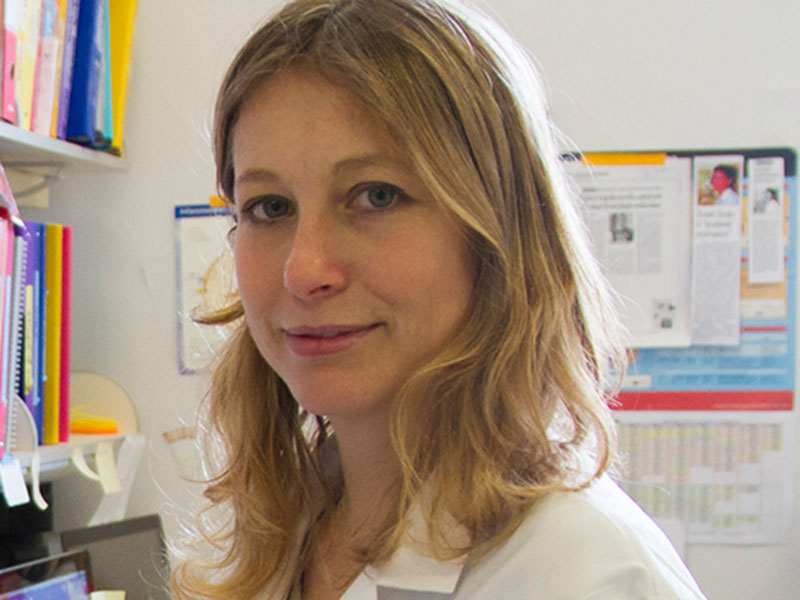Endocytosis, the process by which cells internalize cargo from the outside, is a tightly regulated process: normal regulation ensures cell functioning whereas disregulation contributes to cancer progression. This process, far from being a simple one-way route, encompasses multiple means of internalization that coexist and can operate concurrently. At the 2022 International Symposium on Chemical biology, Prof. Sara Sigismund aims to unravel how endocytic routes are integrated to regulate receptor signaling in cell physiology and cancer.
Prof. Sara Sigismund has dedicated her research career to protein trafficking. Specifically, her long-term goals are to uncover the mechanisms by which the epidermal growth factor receptor (EGFR) is internalized and how this process can become deregulated during disease. EGFR is one of several receptors whose internalization is critical for the pathways that regulate cell differentiation, proliferation, and migration. However, the temporal and spatial regulation of EGFR internalization is complex. EGFR can regulate signaling differently depending on whether it is post-translationally modified or not, it can be activated by both ligand-independent or ligand-dependent mechanisms, and it can enter cells via both Clathrin-mediated endocytosis (CME) or nonclathrin endocytosis (NCE) (Giangreco, Malabarba and Sigismund, Biol Cell, 2021).
Early on in her career, Prof. Sigismund studied post-translation modifications as a signal for protein endocytosis. She helped show that monoubiquitination – the addition of a single ubiquitin to a protein – is a critical signal for EGFR internalization. Her research efforts were rewarded with several prestigious prizes, including the Cecilia Cioffrese Prize, assigned to promising young researchers for Italian research on cancer and viral disease.
Her research work on EGFR internalization also led to the discovery of a novel non-Clathrin endocytic (NCE) pathway for EGFR internalization. This endocytic pathway is dependent on local Ca2+ signaling and on the creation of contact sites between the plasma membrane (PM) and the endoplasmic reticulum (ER). This work helped reinforce the notion that the output of EGFR signaling – attenuation of signaling vs. prolonged signaling – also depends on integration of endocytic pathways and communication between different organelles.
In parallel to her work as associate professor, Prof. Sigismund is actively involved in promoting science in Italy. She organizes events and courses and is also Council Member and Treasurer of the Italian Association for Cell Biology and Differentiation (ABCD), helping to establish networks for students and postdocs and between different laboratories in Italy.
During her talk “Contact sites between PM, ER and mitochondria: connecting EGFR signaling to cell metabolism” at the 2022 International Symposium on Chemical Biology, Prof. Sigismund will discuss the work that led to her discovery of the non-Clathrin endocytic (NCE) pathway for EGFR internalization, particularly the molecular mechanisms driving this process and the functional importance of this pathway to physiology and cancer.
To go further
- Review on the novel and unexpected functions of EGFR in cancer
- Her work on the role of interorganelle contact sites during NCE for EGFR internalization
More about Sara Sigismund
Prof. Sara Sigismund completed her PhD at Open University (Oxford, UK) and IFOM-IEO, the FIRC Institute for Molecular Oncology / European Institute of Oncology (Milan, Italy) under the supervision of Dr. Simona Polo. Following her thesis, entitled “The role of monoubiquitination in endocytosis”, she continued working on endocytosis as a postdoctoral researcher in the lab of Prof. Pier Paolo Di Fiore, expert in the field of protein trafficking and director of the Endocytosis, Signaling and Cancer Lab. Sara became head of the Endocytosis Research Team in this lab, whose primary focus is to understand the role of endocytosis in cancer. Today, she is Associate Professor at the University of Milan and Head of the Endocytosis Research team at the Department of Experimental Oncology, IEO, Milan.


Leave a comment
The editors reserve the right not to publish comments or to abridge them.